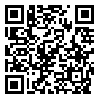Volume 2, Issue 4 (12-2017)
IJREE 2017, 2(4): 11-29 |
Back to browse issues page
Download citation:
BibTeX | RIS | EndNote | Medlars | ProCite | Reference Manager | RefWorks
Send citation to:



BibTeX | RIS | EndNote | Medlars | ProCite | Reference Manager | RefWorks
Send citation to:
Ghahremani Mina K, Biria R. (2017). Exploring Interactive and Interactional Metadiscourse Markers in Discussion Sections of Social and Medical Science Articles. IJREE. 2(4), doi:10.29252/ijree.2.4.11
URL: http://ijreeonline.com/article-1-71-en.html
URL: http://ijreeonline.com/article-1-71-en.html
Amin University, Fooladshahr, Isfahan, Iran
Abstract: (17212 Views)
Metadiscourse markers are used as one of the tools which make writing more effective in social environment and are regarded as one of the most important features in communication among people for expressing the information through different linguistic expressions with cohesive and logical constructions. Accordingly, the present study aimed to identify interactive and interactional metadiscourse in a targeted sample of 100 English research articles written by Iranian writers utilizing Hyland’s taxonomy. The sample included the discussion sections of randomly selected articles with 70000 running words published between 2010 and 2016. The overall findings disclosed that, in interactive metadiscourse category, the use of transitions, frame markers, and evidentials in social science articles were more frequent than those in medical science texts. The results further revealed that the use of endophoric markers and code glosses were almost the same. In interactional metadiscourse corpora, however, the findings demonstrated that writers used hedges, boosters, and self-mentions more frequently in medical science articles compared to those in social sciences. Comparatively, the discussion sections in social science texts contained a higher percentage of engagement markers. It was also found out that there was no significant difference in the use of attitude markers in both disciplines. Notably, the social science authors seemingly preferred to employ interactive metadiscourse markers more, while the medical science authors used interactional metadiscourse markers more frequently in their research articles.
Keywords: interactional metadiscourse marker, interactive metadiscourse marker, medical science, metadiscourse marker, social science
References
1. Abdi, R. (2002). Interpersonal metadiscourse: An indicator of interaction and identity. Discourse Studies, 4(2), 139-145. http://dx.doi.org/10.1177/14614456020040020101. [DOI:10.1177/14614456020040020101]
2. Abdollahzadeh, E. (2001). Native and non-native writers' use of textual metadiscourse in ELT papers. Unpublished Master's thesis, University of Tehran, Tehran.
3. Abdollahzadeh, E. (2003). Interpersonal metadiscourse in ELT papers by Iranian and Anglo-American academic writers. Paper presented at the International Conference on Multiculturalism in ELT Practice: Unity and Diversity, Baskent University, Turkey.
4. Aguilar, M. (2008). Metadiscourse in academic speech: A relevance-theoretic approach. Bern, Switzerland: Peter Lang.
5. Amiryousefi, M., & Eslami-Rasekh, A. (2010). Metadiscourse: Definitions, issues, and its implications for English teachers. English Language Teaching, 3(4), 159-167. http://dx.doi.org/10.5539/elt.v3n4p159 [DOI:10.5539/elt.v3n4p159]
6. Cao, F., & Hu, G. (2015). Disciplinary and paradigmatic influences on interactional metadiscourse in research articles. English for Specific Purposes, 39, 12-25. [DOI:10.1016/j.esp.2015.03.002]
7. Crismore, A. (1984). The rhetoric of textbooks: Metadiscourse. Journal of Curriculum Studies, 16(3), 279-296. [DOI:10.1080/0022027840160306]
8. Crismore, A., Markkanen, R., & Steffensen, M. S. (1993). Metadiscourse in persuasive writing: A study of texts written by American and Finnish university students. Written Communication, 10(1), 39-71. doi: 10.1177/0741088393010001002 [DOI:10.1177/0741088393010001002]
9. Faghih, E., & Rahimpour, S. (2009). Contrastive rhetoric of English and Persian written text: Metadiscourse in applied linguistic research articles. Rice Working Papers in Linguistic, 1(1), 92-107.
10. Firoozian, A., Khajavy, H., & Vahidnia, F. (2012). A contrastive study of metadiscourse elements in research articles written by Iranian applied linguistics and engineering writers in English. English Linguistics Research, 1(1), 88-96. doi: 10.5430/elr.v1n1p88 [DOI:10.5430/elr.v1n1p88]
11. Gillaerts, P., & Van de Velde, F. (2010). Interactional metadiscourse in research article abstracts. Journal of English for Academic Purposes, 9(2), 128-139. 10.1016/j.jeap.2010.02.004 [DOI:10.1016/j.jeap.2010.02.004]
12. Harris, Z. S. (1959). The transformational model of language structure. Anthropological Linguistics, 1(1), 27-29. http://www.jstor.org/stable/30022172
13. Hyland, K. (1998). Persuasion and contexts. The pragmatics of academic discourse. Journal of pragmatics, 30(4), pp. 37-455. doi: 10.1016/S0378-2166(98)00009-5 [DOI:10.1016/S0378-2166(98)00009-5]
14. Hyland, K. (2001). Bringing in the reader: Addressee features in academic articles. Written Communication, 18(4), 549–574. http://dx.doi.org/10.1177/0741088301018004005 [DOI:10.1177/0741088301018004005]
15. Hyland, K. (2005a). Metadiscourse: Exploring interaction in writing. The Modern Language Journal, 91(3), 479-480. doi: 10.1111/j.1540-4781.2007.00593_9.x [DOI:10.1111/j.1540-4781.2007.00593_9.x]
16. Hyland, K. (2005b). Stance and engagement: a model of interaction in academic discourse. Discourse Studies, 7 (2), 173-192. doi: 10.1177/1461445605050365 [DOI:10.1177/1461445605050365]
17. Jalilifar, A., & Kabezade, F. (2012). A comparative study of textual metadiscourse markers in introduction and method sections of applied linguistics research articles. Journal of Language, Culture, and Translation (LCT), 1(1) (2012), 17–31.
18. Khedri, M., Heng, C. S., & Ebrahimi, S. F. (2013). An exploration of interactive metadiscourse markers in academic research article abstracts in two disciplines. Discourse Studies, 15(3), 1-13. [DOI:10.1177/1461445613480588]
19. Kuhi, D., & Behnam, B. (2011). Generic variations and metadiscourse use in the writing of applied linguists: A comparative study and preliminary framework. Written Communication, 28(1), 97-141. [DOI:10.1177/0741088310387259]
20. Loi, C. K., & Lim, J. M. H. (2013). Metadiscourse in English and Chinese research articles introductions. Discourse Studies, 15(2), 129-146. [DOI:10.1177/1461445612471476]
21. Mirshamsi, A., & Allami, H. (2013). Metadiscourse markers in the discussion/conclusion section of Persian and English master's theses. Journal of Teaching Language Skills, 32(3), 23-40. doi: 10.22099/jtls.2013.1706
22. Mur-Duenas, P. (2011). An intercultural analysis of metadiscourse features in research articles written in English and in Spanish. Journal of Pragmatics, 43(12), 3068-3079. [DOI:10.1016/j.pragma.2011.05.002]
23. Toumi, N. (2009). A model for the investigation of reflexive metadiscourse in research articles. Language Studies Working Papers, 1, 64-73.
24. Vande Kopple, W. (1985). Some exploratory discourse on metadiscourse. College Composition and Communication, 36(1), 82–93. doi: 10.2307/357609 [DOI:10.2307/357609]
25. Williams, J. W. (1981). Style: Ten lessons in clarity and grace. Glenview, IL: Scott, Foresman.
26. Zarei, G. R., & Mansoori, S. (2011). A contrastive study on metadiscourse elements used in humanities vs. non-humanities across Persian and English. English Language Teaching, 4(1), 42-50. doi: 10.5539/elt v4n1p42.
Send email to the article author
| Rights and permissions | |
 |
This work is licensed under a Creative Commons Attribution-NonCommercial 4.0 International License. |

This work is licensed under a Creative Commons Attribution-NonCommercial (CC BY-NC 4.0)






